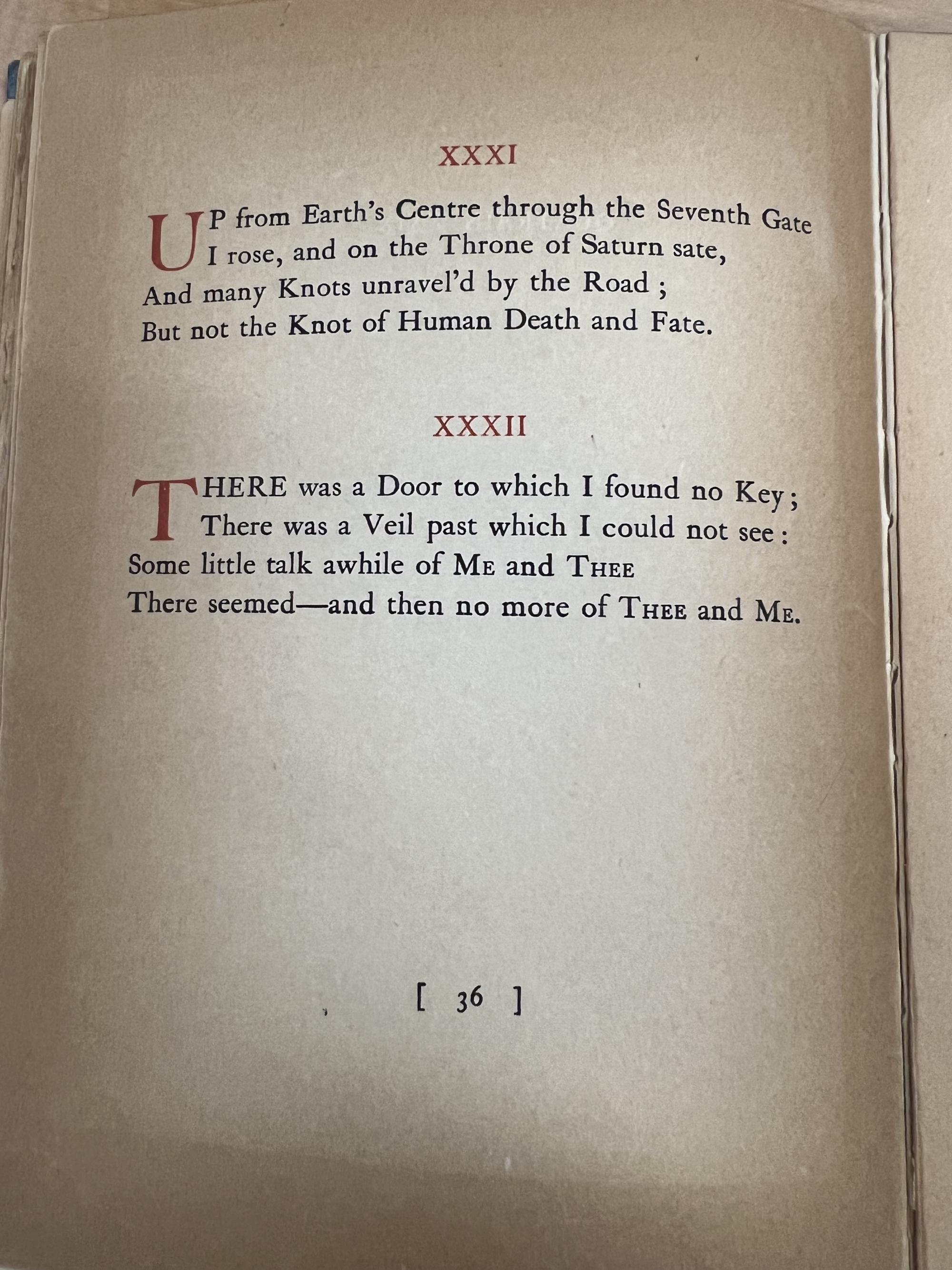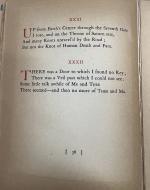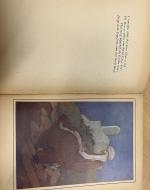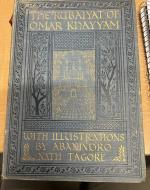Created by Nino Paoli on Fri, 05/05/2023 - 02:52
Description:
The popularity of the FitzGerald’s Rubáiyát of Omar Khayyám “attests to the poem’s cult following in the nineteenth and early twentieth centuries," Barbara Black writes in On Exhibit: Victorians and Their Museums (59). The popularity of the Fitzgerald-translated Persian poem, and the British and American trend of gifting thousands of different editions of it during this time points to a “cultural imperialism,” though, as Black argues the popularity was more rooted in the fervor of collecting different editions, causing the poem to fall victim to “popular consumption,” rather than true appreciation of the poem’s history, content and value (58-60). Often the poem was referred to as ‘a jewel,’ or ‘a Persian pearl,’ which effectively made it “susceptible to a miniaturizing that is consistent with the popular miniature packaging of the Rubáiyát, this poem’s value becomes inseparable from its pretty, crafted, possessable diminutiveness," furthers Black (60-61). Ultimately, Black states that this popular consumption and fervent gifting of the Rubáiyát during this era was rooted in the European, and more generally the West's, romanticization of the “Oriental,” which commodified Persian culture and diminished the East to something akin to a fantasy land.
I think that it is always difficult for a historically imperialist empire or country like the British Empire to genuinely appreciate a culture of historically oppressed areas like Persia and the East through an objective lens where there is no power dynamic. This trend of gifting didn’t exist in a vacuum, so I am hesitant to believe that this trend wasn’t partially spurred by the romanticization of the East.
For the edition of the Rubáiyát I chose to look at, The Rubáiyát of Omar Khayyám, The Astronomer Poet of Persia, I see evidence for and against Black’s assertion.
Firstly, the physical book is not a pocket edition; in contrast, it’s relatively big. The pages of the edition have a large surface area, and with a maximum of only two quatrains on each page, ample white space is left on the pages (see Figure 1). I think this refutes Black’s argument, in that this edition is not innately possessable and diminutive; it’s actually quite awkward to handle! If the pages were miniaturized and made a more easily-printable version of the poem, the implication of a large-scale manufacturing of this specific edition would be clear. But, I don’t think this particular book was made to be copied and produced efficiently, as Black argues.
However, I do question why Abanindro Nath Tagore was the specific painter for this edition of the Rubáiyát. I find it odd that even though Tagore was born and raised in the East, he was British Indian, not Persian, yet he was the artist chosen to accompany paintings along with excerpted quatrains within this edition (see Figure 2). Tagore also specialized in painting Hindu ideas, and so as an inherently counter-religious text, the Rubáiyát seems an ironic poem to pair with paintings of an artist with such a different outlook on life (Cultural India).
Lastly, I’d like to look at the cover of this book again. The gilded large text, as well as the golden mosque on the cover does connote an air of extravagance (see Figure 3). In this way, I think that the detailing in the sewn binding hardcover makes up for whatever diminutiveness this edition lacks. In other words, this may not be a typical pocket-sized edition easy to gift, but it could be seen as a special edition of the poem, since it has such a capturing cover and promises artwork from a popular “Oriental” artist at the time.
So, in a way, this edition of Fitzgerald’s first translation of the Rubáiyát of Omar Khayyám both subverts and reinforces Black’s claims of commodifying Persian culture and diminishing it into something collectible. The intention of books is to sell and make a profit, but to what extent do marketing strategies such as gilding and famous artwork to compliment the wildly popular poem become more of an appropriation of a culture than a genuine appreciation of the poem’s value?
Works Cited:
Black, Barbara J.. On Exhibit: Victorians and Their Museums. United Kingdom, University Press of Virginia, 2000.
Cultural India. “Abanindranath Tagore Biography - Life History, Paintings & Artwork, Facts.” Biography - Life History, Paintings & Artwork, Facts, https://www.culturalindia.net/indian-art/painters/abanindranath-tagore.h...
Khayyám Omar. The rubáiyát of Omar Khayyám Fitzgerald's Version with Twelve Illustrations by Abanindro Nath Tagore. Translated by Edward Fitzgerald, George W. Jacobs & Company, 19n.d..




